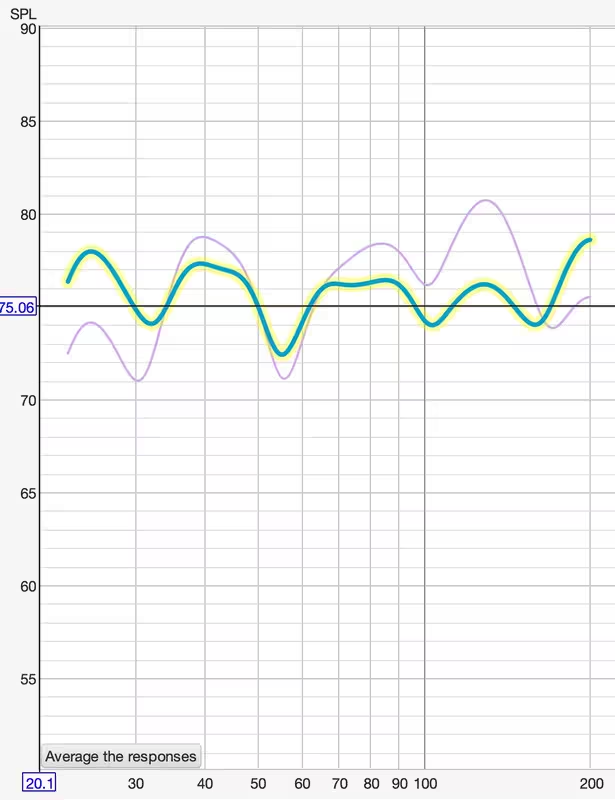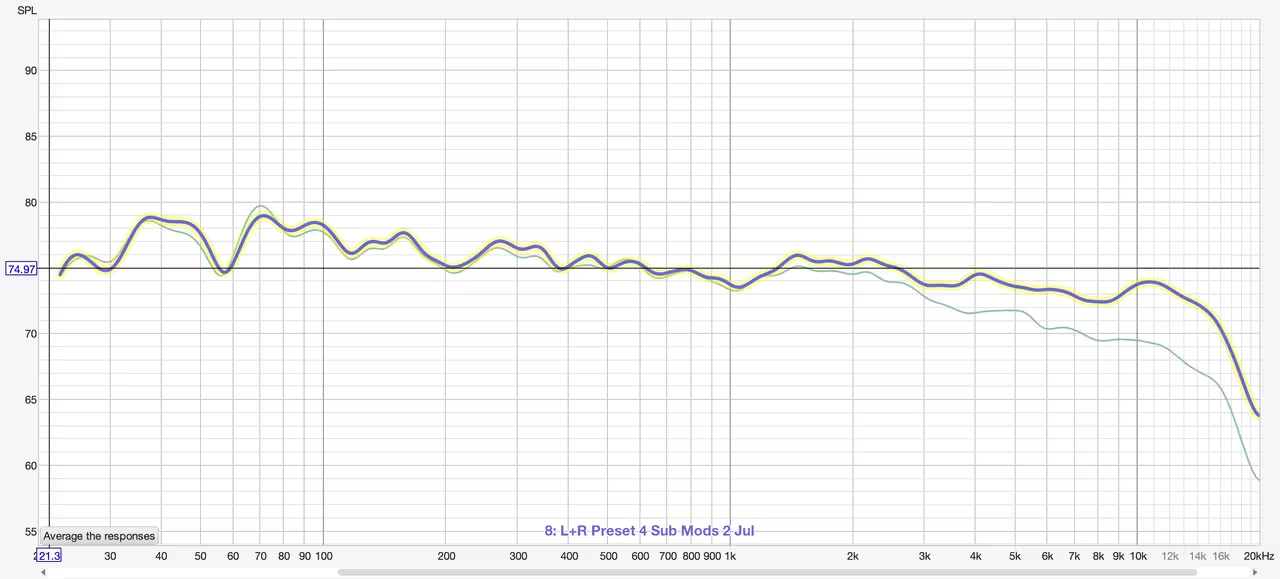@soix
The subs are placed where they would fit to avoid blocking a door from opening or having it firing directly into the back of my listening chair.
So one sub is here:
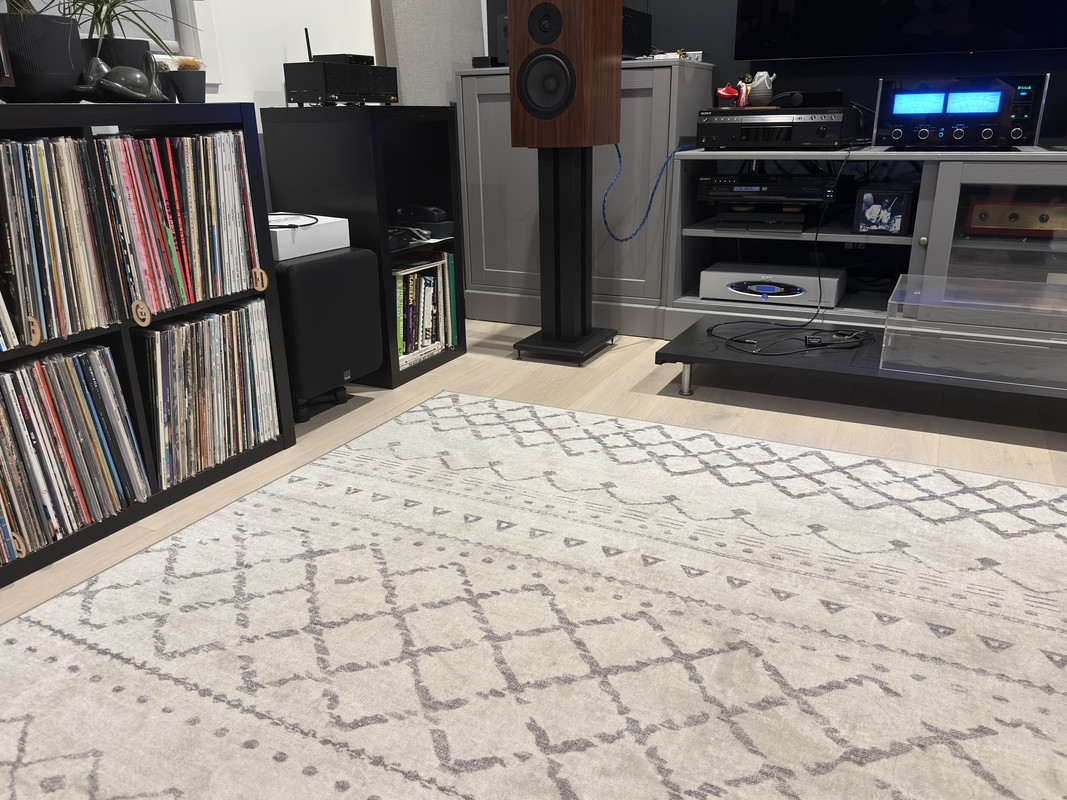
So it’s there to the right of the Kallax. That 2 x 1 cube doesn’t need to be there and can be removed.
The other sub is in the back of the room as shown:

So it’s also on the left side of the room, but more center left than hard left. I could move it to the other side (center right) of the back wall by relocating that beverage fridge and single speaker, but wasn’t sure if that would make a big difference, so I didn’t relocate everything.
About the acoustic panels, here’s the front of the room:
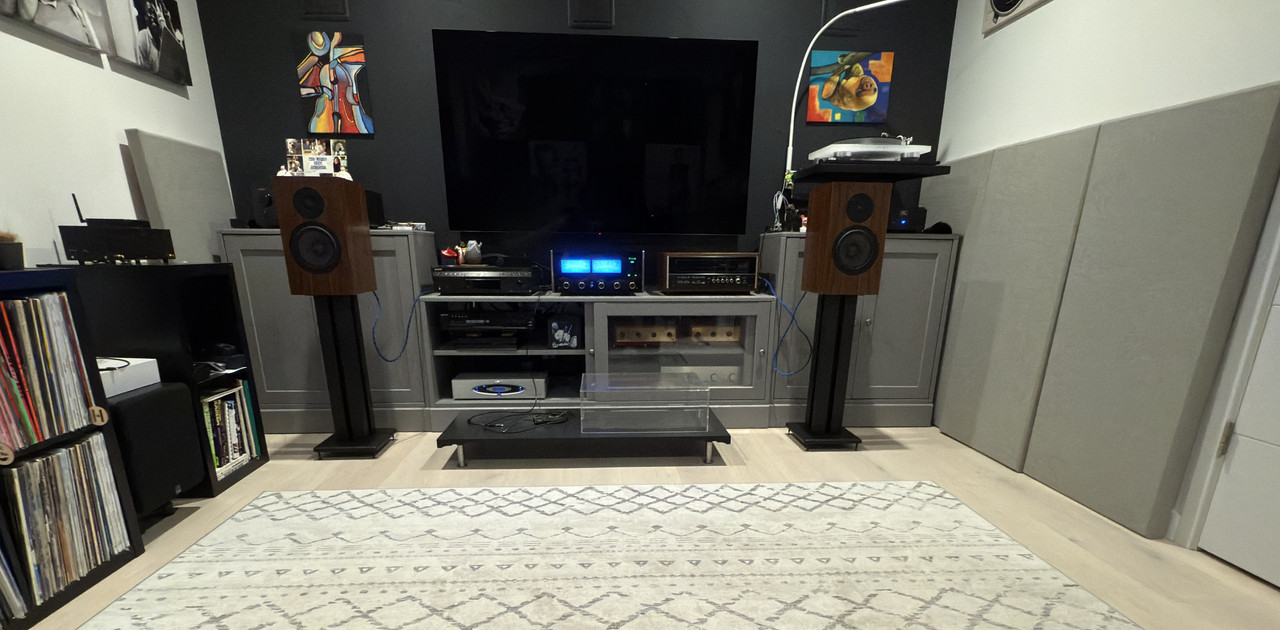
So you can see I have one on the left near the corner and 3 on the right against the wall. Then comes the door which is untreated.
Here’s the back of the room:
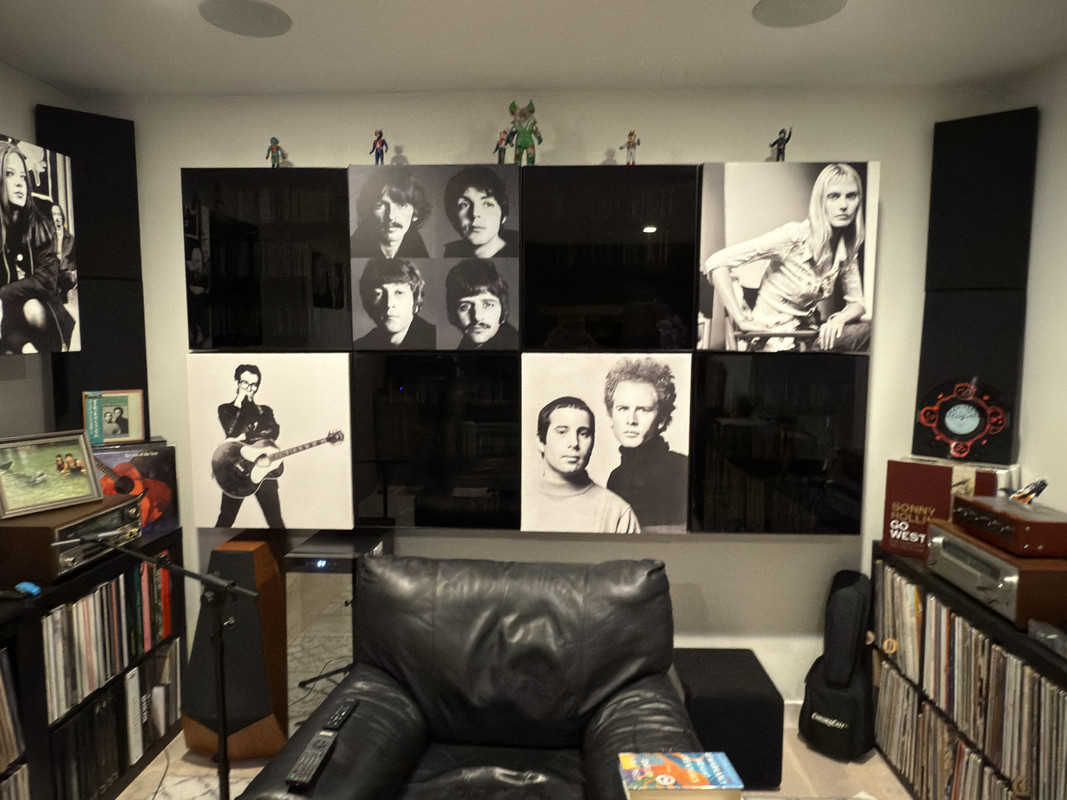
There are some short black panels in the corner that are stacked on top of each other - but they’re not purpose built panels - just cheap ones from Amazon. I bet them do little to nothing.
All those canvas pictures mounted on the doors of the wall cabinets are filled with foam, as are most of the canvas on the wall.
This is what I mean by random. The three panels on the right wall - the one closest to the door may catch the first reflection point - not sure.
The overall attempt was to avoid a live room and not make it overly reflective.
I have done REW measurements with pictures off the wall, wall cabinet doors open - doesn’t make a big difference. Though I did remove two of the panels on the right today and the higher frequencies were boosted some without them.
But my mains, if swept with no EQ, have a wide depression at lower frequencies. Here’s the left channel:

And the right:
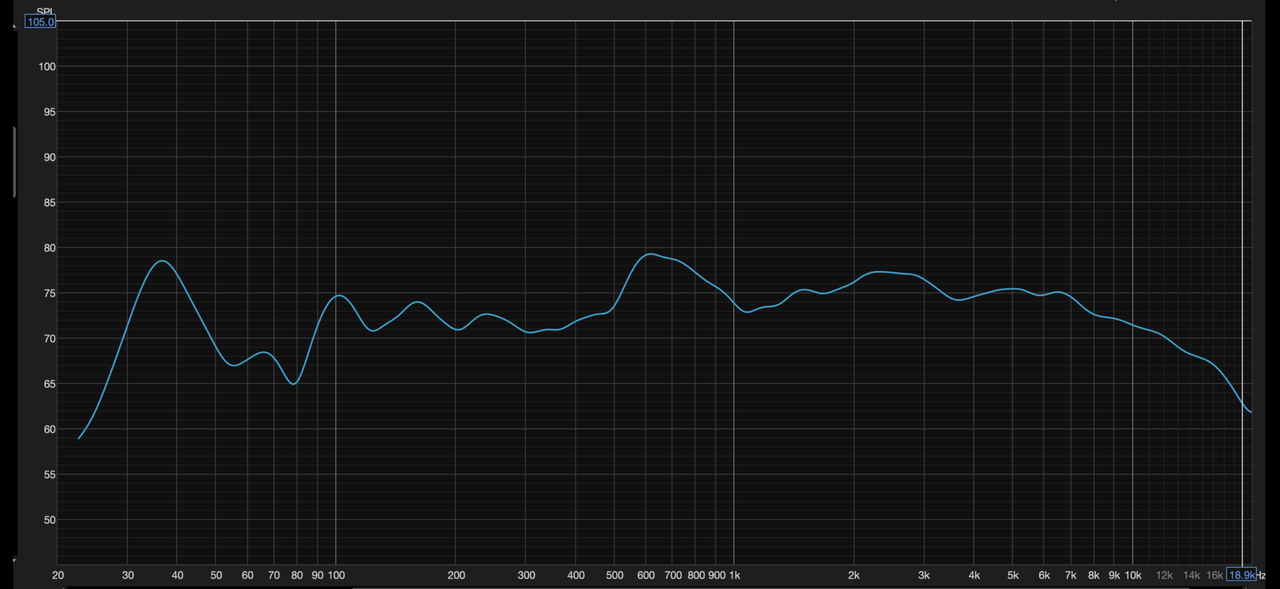
Especially the left channel, from 60-300Hz or so. I’ve tried covering up the window, moving the speaker front/back, left/right, but it’s pretty much always there.
So the AutoEQ ends up cutting the higher frequencies to match the lower ones.
This is my ceiling:

I have 4 recessed lights, one vent, and 4 Atmos speakers (and one smoke alarm). The whole center width of the room is open maybe 5.5ft wide between lights or speakers, front to back, and maybe an 8x8 section in the front third that doesn’t have anything there.
So it feels like my options are somewhat limited. Even the corners of the room are restricted by wall cabinets, my TT, etc. So any triangular bass traps would be limited to maybe 12” on their face.
Hope all the above makes sense.
